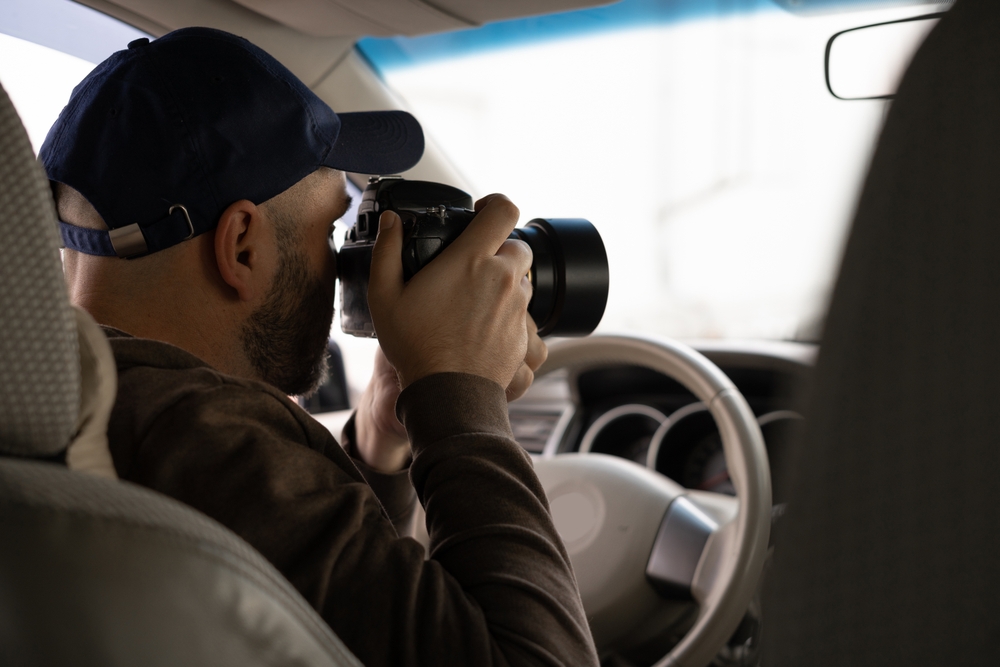
How a Sub Rosa Investigation Affects Your Workers’ Comp Claim
-
Jun 19, 2025
-
Blog
-
Michael Burgis & Associates, P.C
Are you a workers’ comp attorney who just got served with surveillance video and fear your case is ruined? Don’t panic.
I’m Michael Burgis, trial attorney and certified legal specialist in California Workers’ Compensation law. In this video, I’ll walk you through the key legal protections and tactical advantages you still have—even with Subrosa footage.
Drawing from the case Gunderson v. County of Kern, we’ll explore how improperly disclosed or unauthenticated surveillance can be excluded at trial. From understanding your client’s due process rights to leveraging evidentiary rules, I’ll break down how to challenge damaging video footage and possibly even turn it to your advantage.
Whether you’re facing a tough trial or just want to sharpen your litigation strategies, this video will give you the legal insights and confidence to keep fighting. Remember, Subrosa doesn’t automatically spell defeat. Let’s talk about how to fight back—smartly and strategically.
If you’ve been served with Subrosa footage in your workers’ comp case, don’t assume the worst—get legal guidance now. Contact MB&A for a free consultation and let us help protect your client’s rights.
Transcript:
Are you an attorney litigating a disability claim and you just got served with video evidence and you’re concerned that that might have just ruined your case? Not necessarily true. Let me tell you why.
Hi, my name is Michael Burgis. I’m the managing attorney of MB&A. I’m a certified legal specialist in California Workers’ Compensation, and I’m a trial attorney.
Gunderson v. County of Kern and Subrosa
In this video, I want to talk about a recent case called Gunderson v. County of Kern. This case has two fundamental holdings. The first is dealing with an occupational variant and a job description. I did a separate, distinct video on that one. Click the description if you want to watch that. This video is going to focus on the second holding on this one, dealing with what’s called Subrosa and the admissibility of Subrosa.
Subrosa or Surveillance Footage
So ultimately, Subrosa is surveillance footage. This is typically what happens in a worker’s comp case where the compensation is based on disability and the injured worker or their attorney is advocating for the highest amount of disability. When a defendant disputes this, they can go out and get Subrosa or surveillance footage essentially showing that person being more physical or more active or something they think impeaches their credibility or the stance in the case.
Now, typically, when an injured worker’s attorney is litigating a case and they’re prepping for trial and then they get Subrosa served on them or surveillance served on them. Typically, the response is “Sh*t.” And they assume this Subrosa is going to be admissible. It’s going to destroy the case.
Don’t Assume Subrosa Destroys Your Case
Let me stop here by saying, first, when you get served Subrosa, don’t assume it destroys your case. Watch it. I don’t care how many hours it is. You have to watch it. Because I’ve had cases where I’ve been served surveillance and Subrosa that, actually, there was a gem in there that proved my case. And I’ve won trials based on defendants’ own surveillance and Subrosa, so I stipulated to it coming in and it being admissible.
Admissibility of Subrosa Surveillance Footage
And typically, Subrosa surveillance is admissible but some fundamental steps need to be done to make sure it’s admissible. And that’s what this case is discussing. This case and the holding is: Surveillance or Subrosa cannot come into evidence at trial unless it’s been properly authenticated.
Now, most trial attorneys understand this. Most civil attorneys understand this. But most workers’ comp attorneys, especially ones who don’t litigate or go to trial a lot, miss this fundamental step. And that is, first, look at the video. If it helps your case, stipulate to it coming in. If it harms your case, don’t assume it automatically comes in. There are a few more steps here.
First, evidence must be disclosed prior to the MSC, or prior to setting the matter for trial. So at the mandatory settlement, discovery closes. And an injured worker fundamentally has due process. They need to be served the surveillance and make sure that they have the opportunity to do a reasonable discovery if necessary. So if a defendant does not disclose the surveillance or subrosa on the exhibit sheet prior to setting the matter for trial, you can get excluded on that basis.
However, they can still theoretically get it in under impeachment. But let’s just assume for a second, you’re at trial. They’ve properly listed the surveillance as an exhibit and you’re a trial attorney and you’re assuming it comes into evidence, right? That’s a mistake. They still have to authenticate this, right?
You want to make sure that that is, in fact, your client in the video, because I have got the video and it turns out it’s not my client. I’m a twin. I have a twin brother. Right. So obviously, if there are siblings, or somebody who looks close to them, be wary of that. But authentication here is important.
So I wanted to touch bases on this case because there is a technicality that you can potentially win a case on. And that is, let’s say you get served Subrosa, surveillance footage. Let’s say it’s adverse and let’s say it destroys your case. And they’ve timely listed it. It’s on the pretrial conference listed as exhibits. You got served. You’re screwed there. Don’t forget about authentication.
Very often, a defense attorney, and I say often, will make a mistake. They must list the person who took the surveillance footage. They must list the person who had the chain of custody if it’s somebody different. And if they don’t list those people as witnesses, you can win on a technicality. So if you’re an injured worker, or rather an injured worker’s attorney, and they’re trying to get Subrosa or surveillance video in at trial against you, don’t forget about authentication.
And this case says, again, subrosa is not admissible unless it’s been properly authenticated. An injured worker’s attorney should never stipulate to that video coming in unless it’s helpful for their case. And if it’s harmful, they should say, you know, “Counsel, I’m not stipulating to it and you just have to properly authenticate it.”
If they didn’t list those people as witnesses, they wouldn’t be able to authenticate it. And then if they try to put those people, you say, “Your Honor, I object. These people aren’t listed on the witness list, and they don’t come in.” And guess what? They don’t. And it gets excluded.
Exclude Subrosa from Being Admitted Based on an Authentication Technicality
So Gunderson v. County of Kern, the take-home here for trial attorneys is this, Subrosa or surveillance isn’t the death of a case, even if it shows things that are adverse and would harm your case because you might still get it out on a technicality. Look, were you properly served? Were you served prior to the MSC? Did they properly list it? Did they properly list people who can authenticate it? And did they authenticate it at trial?
Just because they list somebody, I can’t tell you how many times that person wasn’t the person that took the video. That wasn’t the person that knew the chain of custody. So again, don’t make it easy for the defense. And this case says, again, the defense has to properly authenticate it or it doesn’t come in.
Contact MB&A Regarding Subrosa Video and Your Client’s Workers Comp Claim
So hopefully this video is helpful. And just a general reminder that getting served adverse subrosa or surveillance isn’t the death of your case. You have to, one, look through it and make sure that there are no gems that help your case. Two, make sure that it is harmful to your case. Make sure that that is your client in that video and not a sibling or somebody who looks similar.
And even then, when you think all is lost, it’s still not lost because you might be able to get it thrown out on a technicality of authentication.
So, hopefully this video has been helpful. If you have any questions, please give us a call, we’re standing by. If you found this video helpful, please like, share, subscribe as we keep putting out content.
And again, this is only one of the holdings in the case of Gunderson v. County of Kern. Click to see the video of the other fundamental holding that deals with occupational variants and could be a very big increase in compensation to your injured worker.
Jerry DiLeva
"Michael told me that he was going to do the best he can for me, my family, and for my future needs. He's surrounded by a staff. A staff so excellent they're very knowledgeable, professional, and very kind, courteous ... If you're really serious in a workman's comp case what can I say Michael Burgis is the guy. His staff will treat you right, you'll go in the right direction and I guarantee you will win."
See What Our clients say





